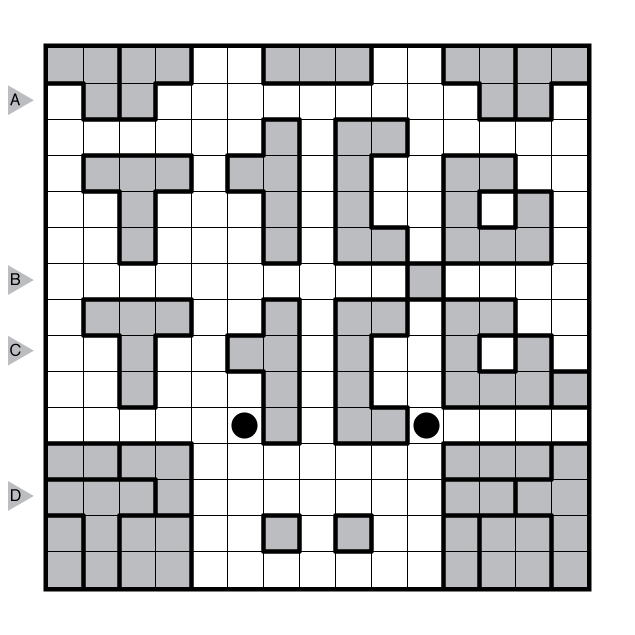The Persistence of Memory by Prasanna Seshadri

(View image directly for larger form.)
or solve online (using our beta test of Penpa-Edit tools using a composite mode where left click inside cell shades square, left click + drag draws line segment, right click inside cell adds dot, and right click on cell edge adds an x.)
Theme: TYCG (Thank You, Chris Green) — this is a Patron Puzzle reward.
Author/Opus: This is the 79th puzzle from our contributing puzzlemaster Prasanna Seshadri.
Rules: Find a path from one dot to the other by moving horizontally or vertically between adjacent squares. The path cannot touch itself, even diagonally. All highlighted regions must be visited by the path, and may be re-entered. If two or more highlighted regions have the same shape and orientation, then how the path passes through those shapes must be identical. Or see here.
Answer String: Enter the length in cells of the horizontal path segments from left to right in the marked rows, starting at the top. If the path only has vertical segments in the marked row, enter 0. Separate each row’s entry with a comma.
Time Standards (highlight to view): Grandmaster = 4:15, Master = 6:00, Expert = 12:00
Solution: PDF

http://i.imgur.com/DlfzOi9.png
Not sure how this isn’t a valid solution
The path must visit all highlighted (gray) regions. Your solution has visited zero of these regions.
This puzzle wasn’t in the pack sent out last week. I almost missed it.
I am not sure why my solution is incorrect. I am pretty certain I did the puzzle correctly.
I almost missed the puzzle as well. Perhaps until Thomas ets back to regular posting of puzzles, we’ll have to check the website instead of relying on emailed puzzle packs.
For what it’s worth, the website’s applet did accept my solution. You are counting path lengths, not number of cells touched by horizontal paths, right?
You are right. I used the wrong answer key.
I always find the description “the path can’t touch itself” when it’s a line to be somewhat confusing. From experience, I know to treat it like a snake. But I don’t think a line running through an adjacent cell is touching itself.
As long as we’re nitpicking wordings, I always find “the length in cells” confusing. This identical wording appears both when the intent is to determine the length of a line segment running from one cell center to another (as in this or other loop puzzles) as well as when one should count a number of cells (as in LITS or other shading puzzles).
I’m well aware of the two different kinds of counting, (and generally know what to expect), but even when reading this description for the first time, the word “cells” jumped out at me and for a second I thought, “Oh!? The answer sring wants a cell count and not a line length?”.
But I don’t have a useful recommendation for wording to better distinguish the two cases.
This took me about 30 to 40 minutes.. i could not find the right Notation, i kept changing between x’s on the borders and inside the cells to mark where the path could not go. As a result my grid was a caothic mess with the path barely visible… fun puzzle though, didn’t know this type before 🙂
In this case, because the path couldn’t touch itself, I took to shading in the squares that could have no path, and using X’s on the edges when I didn’t yet know what would happen with a particular square. Worked out cleanly.
Lovely puzzle.Had great fun !